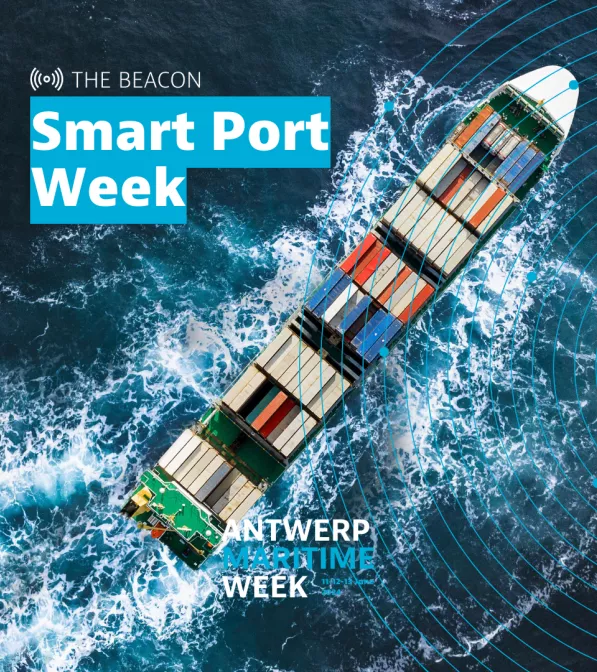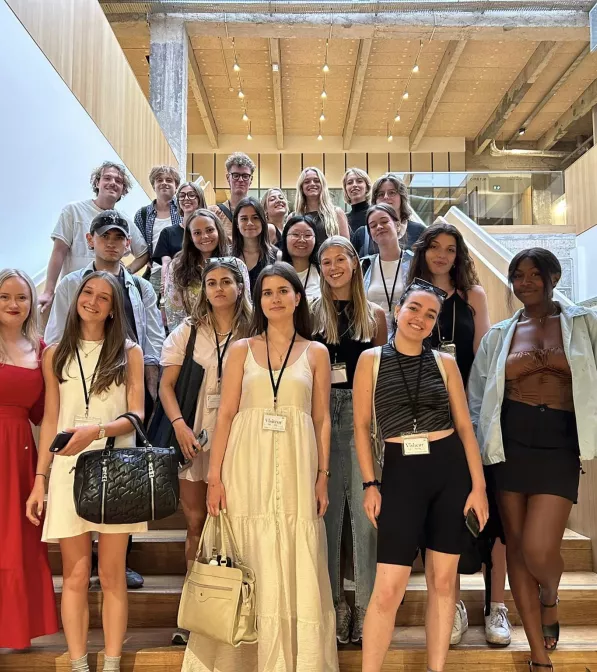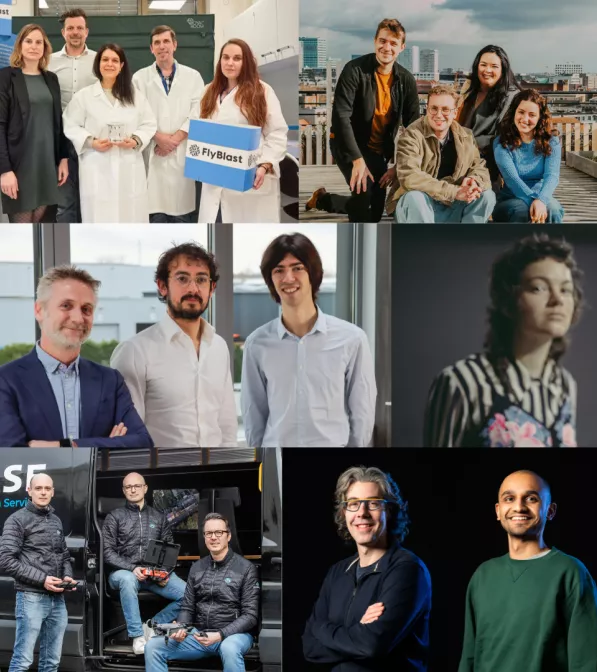Support for reduce energy consumption and CO2 emissions
By contacting Jan Jaeken, the head of Samen Klimaatactief, entrepreneurs are already getting their first free guiding advice on the energy-saving measures they can take. Companies also receive a quick and objective overview of providers that offer concrete solutions. Hysopt is one of them.
![Roel Vandenbulcke [Hysopt]](https://zapdrupalfilesprod.s3.eu-central-1.amazonaws.com/bia/sites/default/files/styles/large_square/public/2022-11/Roel%20Vandenbulcke%20-%20Jonathan%20Ramael-3_1920x900_0.jpg.webp?VersionId=KEFvr.kuCXGra1dJ.x31KxuGYr.VusS7&itok=k1gQNBDf)
- Home
- News & events
- Support for reduce energy consumption and CO2 emissions
How the City of Antwerp supports companies to reduce energy consumption and CO2 emissions
Hysopt helps companies towards a greener and sustainable future
In 2013, Roel Vandenbulcke thought it was time to help companies take action-oriented steps towards greener, carbon-free operations. During his doctoral research at the University of Antwerp, he developed a science-based HVAC (Heating Ventilation Air Conditioning) calculation and simulation software. This software is intended to help building managers get the best out of their heating and cooling systems. “With Hysopt, they can save up to 40 percent on CO2 emissions and 30 percent on energy. Not to mention the impact that the thermal comfort of a building has on the well-being and productivity of the people who work there or visit,” says the CEO of the rapidly growing Antwerp scale-up.
A crucial step in addressing the climate crisis is to heat and cool buildings more efficiently, since they represent 40 percent of energy consumption and 36 percent of CO2 emissions. “Most people assume that a building becomes sustainable by insulating it. That’s true, but few are aware that optimising the HVAC system can also drastically reduce operational costs and CO2 emissions,” says Roel Vandenbulcke, who developed a mathematical model to predict the behaviour of HVAC installations through simulations. This led in 2013 to the establishment of his company Hysopt, the abbreviation of ‘Hydronic System Optimisation’, as a spin-off of the University of Antwerp.
Digital Twin
To create transparency and contribute to a more sustainable world, Hysopt offers a science-based design software that helps companies get the best out of their HVAC systems, which tend to underperform and pollute too much. “Based on our simulations, we offer them various choices to reduce their CO2 emissions and cut their energy costs. This will allow them to regain control and considerably increase the comfort in the building,” says Vandenbulcke. Hysopt’s customers are mainly building managers, engineering offices and installation companies. “In the past, we also focused heavily on the end customer. We still do this, but working with partners makes us more scalable. They also speak the same language as us. End customers are mainly concerned with comfort and energy bills, less with the complex technology behind it.”
The technology on which Hysopt is based is simulation technology that is mainly used in academic circles. “By building an intuitive user interface on top of the mathematical models, we’ve succeeded in translating complex technology into a professionally deployable product,” explains Vandenbulcke. It’s all about the ‘Digital Twin’ of a building — a replica of it in a virtual environment. Here, the behaviour of the building is simulated dynamically under variable conditions. Alternatives are also simulated, calculated and compared. In this way, the right decisions can be made regarding heating, ventilation and air conditioning.
“For example, Hysopt encourages companies to be more sustainable and transparent in their energy consumption and CO2 emissions,” explains Vandenbulcke, who as an engineer is the brains behind the physical aspect of the software. His team also includes mathematicians who work through the physical models, and software developers to translate everything into user-friendly software. “That’s the power of our spin-off: Hysopt was created by bringing these different disciplines together, which is easily done within a university. That results in a very interesting cross-pollination,” he says.
Cost, CO2 and Comfort
To ensure that buildings achieve their net-zero carbon potential, it is important to make them healthier, more comfortable and more efficient. Hysopt does this by looking for a balance between the 3 Cs: Cost, CO2 and Comfort. “Previously, the focus was mainly on achieving climate targets, whereas in times like today, it’s more about keeping the energy bill under control. The economic aspect is more important than the ecological aspect,” says Vandenbulcke.
Yet every customer has different needs. “In an office building, for example, the indoor climate and the resulting comfort are very important for the people who work there, while in student accommodation, a lot of that comfort can be lost,” Vandenbulcke explains. “The key is always to find the right balance between the 3 Cs in every building.”
First time right
After screening the building via the Digital Twin, the applicant is presented with all the options for optimisation, from which they can choose. “Our software supports the conceptual design of the HVAC installation. Is it best to choose a heat pump and how large should it be compared with the boiler? Is cogeneration interesting? Can energy be stored in the ground? Hysopt offers an answer to these questions. The applicant is given a range of options, after which it is up to them to determine what’s most important.”
Once that choice has been made, the software is used in the next step: the technical design of the HVAC installation. The software selects all the components of the installation: pumps, adjusting valves, radiators, etc. The result is a comprehensive plan for the installer with a list of all the required components, where they should be installed and to which settings they must be adjusted. “We’re seeing a growing interest from the installation sector. Today, installers are much more responsible than before for the correct operation of their installations. They benefit from first time right systems that help their customers save CO2 and energy. With our software, we offer them the tools they’re looking for to optimise performance. That is how we help them provide a better service to their customers,” adds Vandenbulcke. Hysopt works with a selection of strong partners, ensuring that the original design intent for optimising the heating and cooling systems is met with actual system performance.
Not the building shell, but the system
Less than 10 years after its establishment, Hysopt is a fully independent company with 33 employees and leading clients such as Ziekenhuis Netwerk Antwerpen, Universitair Ziekenhuis Antwerpen, CBRE, Amsterdam Airport, various university campuses and numerous large and small office buildings. “While our turnover grew organically in the early years, we achieved turnover growth of no less than 75 percent in 2021. And it’s still going strong. We feel that our product is extremely relevant today, with the energy crisis and the focus on making buildings more sustainable,” says Vandenbulcke.
However, he believes a change of perception is still needed. “When it comes to making things more sustainable and consuming less, people still think instinctively about insulating. The government strongly promotes it and I understand why, I’m certainly not against it. But for the large buildings we usually work on, post-insulation is not that easy. The investment costs are enormous, at best with a payback period of 10 years, and often this rises to 25 years. There are also many architectural and operational preconditions in larger buildings. With Hysopt, we want to make the market aware that there is a more cost-efficient alternative, namely optimising the HVAC installation. This optimisation is not at component level but at technical system level, when all the different components are combined and unfortunately things often go wrong. By understanding and optimising the entire system instead of just the individual components, we can save on average 30 percent on energy costs and 40 percent on CO2 emissions. And this with an average return on investment of three years, with current energy prices even just one year.”
Climate-active entrepreneurship in Antwerp
Hysopt is a partner of “Samen Klimaatactief”, the initiative of the City of Antwerp to inspire and support entrepreneurs to undertake carbon-neutral activities together. In the meantime, operations have been extended to all of Flanders and also to Brussels. Samen Klimaatactief supports the business world with a public website for each business segment. Samen Klimaatactief is also becoming an increasingly important network of companies. By contacting Jan Jaeken, the head of Samen Klimaatactief, they are already getting their first free guiding advice on the energy-saving measures they can take. Because of the high energy prices, Jan sees the number of requests from businesses rising drastically. This is a clear signal of increasing energy awareness.
Companies also receive a quick and objective overview of providers that offer concrete solutions. Hysopt is one of them. “As a real Antwerp company, we believe it is important to help reduce CO2 emissions from offices, light industry and shops in the city. Too often, companies still think sustainability is expensive, leading them to take insufficient or inappropriate actions. A platform such as Samen Klimaatactief helps them to realise that energy savings are financially feasible,” explains Vandenbulcke.
Controlled monitoring
Vandenbulcke has always been fascinated by sustainability. As early as 2013, before ecology became ubiquitous, he had the ambition to change the status quo in terms of CO2 emissions. “Having jumped on the sustainability train so early, we were able to take a technological lead that we can cash in on today,” he says.
While Hysopt is currently active in design and implementation, Vandenbulcke also wants to focus on the operational phase in the future. “After delivering an installation as optimal, we want to mirror real-life data against the Digital Twin. Hysopt Guard, which is what the product will be called, will monitor the performance of a building in a controlled manner. Because although you can deliver an installation as ideal, things tend to go wrong along the way. It’s not always easy to understand the cause. By testing real-world data against the Hysopt model, we can identify, analyse and address the problem. In this way, we can help companies get even more out of their heating and cooling systems, reduce their costs and increase their sustainable impact,” Vandenbulcke concludes.
This article is a collaboration between Bloovi Studio & the City of Antwerp. The article was published earlier on Bloovi.be, then translated and edited by the City of Antwerp.


